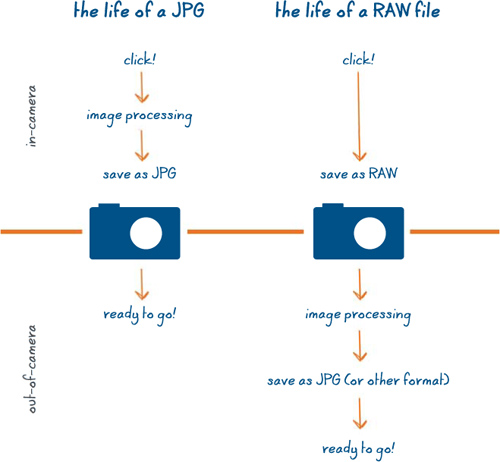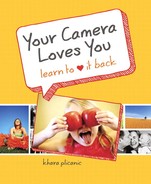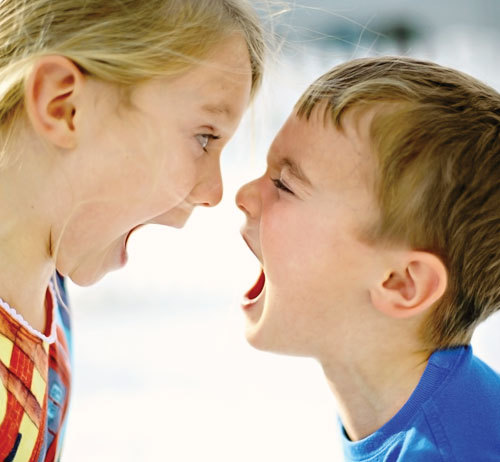Chapter 7. RAW vs. JPG: What’s the deal?
For newcomers, navigating the issue of RAW vs. JPG can sometimes make you want to scream. Save your vocal chords—this chapter is here to help!
If you’ve talked to other shutterbugs, read most any photo magazine, or dug around deep enough in your camera’s settings menu, chances are you’ve come across the option for capturing images in either RAW or JPG file formats.
Unsure of the difference, you may have asked around, talked to the folks at your local camera store, or even checked with a professional photographer. You likely got a smorgasbord of different opinions garbled together with only bits and pieces of an actual answer, leaving you more confused than before. Not cool!
If you’ve never changed your settings, congratulations—you’re shooting in JPG format. Before we go any further, you should know that, for most folks reading this book, there’s no reason to switch. So if you’re thinking, “What!? Now I have to worry about which format I shoot my photos in? Get me outta here,” don’t jump ship. Just keep on shooting JPGs, and you’ll be fine.
However, because the goal of this book isn’t just to tell you what buttons to push or which settings to use, but rather to help you understand why, I feel compelled to tell you the rest of the story.
Let’s start at the beginning, shall we?
By default, most cameras capture images in a file format called JPG (pronounced “jay-peg” and sometimes written as JPEG). Unless you’ve changed your settings, JPGs are what you find waiting for you on your camera’s memory card. They’re the files you download onto your computer, edit in various software programs, upload to sites such as Facebook or Flickr, and ultimately, they’re what you send to the lab for printing. If the photography world had a common currency, JPG would be it.
Some cameras allow you the additional option of capturing your files in a different format called RAW. (Heck, some cameras will let you shoot in both formats at the same time!)
In the realm of professional digital photography, few things are as hotly debated as RAW versus JPG. Ask pro shooters where they stand, and you’ll likely get very impassioned responses from both sides of the fence. The pendulum seems to have swung both ways over the years, ultimately coming down to personal preference and control more than anything else. If you put two high-quality, properly exposed photos side by side and tried to guess which one began life as a RAW file and which was born a JPG, you’d be hard pressed to see a difference. The debate isn’t so much over the end result, but rather the process of how you get there.
Why Some Folks Love JPGs
JPGs are vastly embraced for a number of reasons, including the fact that they’re entirely universal and are easily viewed by anyone on most devices with no special software required. Another thing that makes JPGs so beloved is their relatively small file size. An image captured as a JPG would take up considerably less disc space than if the same image had been captured in RAW—even though the number of pixels in each image would be exactly the same.
Tip
The term “file size” is not to be confused with image size. File size refers to the amount of space the image file occupies on a disc or memory card, and image size refers to the image’s pixel dimensions and resolution. Though a JPG has a smaller file size than a RAW file, the image size would be the same.
This makes for faster file transfers and gives you more bang for your buck when it comes to the number of photos you can fit on both your memory card and your hard drive. JPGs are also low maintenance. Once they’re captured, they’re ready for action and can be shared online, emailed to a friend, or sent directly to print with no additional work required. But of course, every yin has a yang.
JPGs: Full Disclosure
It’s true—not everyone loves JPGs as wholeheartedly as some people do, and the pesky double-edged sword known as compression is generally the culprit. On one hand, compression is what allows JPGs to be so fantastically lightweight when saved to your memory card or hard drive. On the other hand, the very nature of compression requires the sacrifice of quality in favor of a smaller file size, discarding small bits of information that would otherwise be included in the file.
Additionally, by the time JPGs find their way to your memory card, they’ve already been processed, not by you—by your camera. Each time you capture a JPG, the camera records the image along with a set of instructions for how to process it. In this sense, your camera acts like a chef, cooking your JPG while saving it to your memory card.
As seen in Figure 7.1, some cameras even give you the ability to specify the particular way your JPGs are processed. Depending on your model, you may be able to choose settings for things like sharpening, contrast, saturation, and color tone.
Figure 7.1. Some cameras give you the ability to specify the particular way your JPGs are processed.

While having your very own chef may sound pretty sweet, it doesn’t come cheap! All the in-camera processing that takes place limits your options for further adjusting the file with editing software later. Because the processed and compressed pixels of a JPG don’t contain as much image information as the pixels in a RAW file do, there’s less cushion for adjusting things like white balance or exposure in post-production.
Tip
The processing and compression that are built into JPGs are partially why it’s so important to get it right in the camera rather than relying on editing software to fix things later.
Why Some Folks Love RAW
As the name implies, RAW files are, well, raw. They are not processed or compressed by your camera. Because of this, RAW files are, in a word, huge. Taking up roughly four times as much disc space as JPGs, RAW files are the sumo wrestlers of file formats.
Tip
As the saying goes: Garbage in, garbage out! Regardless of whether you’re shooting JPG or RAW, it’s always best to capture the image correctly in-camera rather than to spend an eternity in editing software attempting to clean up the mess.
Even though they have the same number of pixels as their JPG counterparts, RAW files are significantly larger because they haven’t been processed or compressed by the camera. Therefore, they retain all the extra information that is normally cooked out of a JPG (so to speak). The difference is that instead of having to settle for the way your camera processes, you get to wear the chef hat and cook the files yourself.
If you didn’t quite nail the white balance or you botched the exposure a bit, you might be able to save the image in post-production. Because of the rich pixel data stored in a RAW file, there’s greater latitude for adjusting the image after the fact.
Second Thoughts on Going RAW
Though getting to play chef with all your images may sound appealing at first, it can also mean significantly more work. Unlike JPGs that can be downloaded and immediately sent to a photo lab, printed at home, or shared online, RAW files aren’t so agile. Even though they come out of your camera in an unprocessed format, they can’t stay that way. Eventually, they’ll have to surrender and be processed in order to be useful. (You can’t send a RAW file to a photo lab for printing any more than you could upload a RAW file to Facebook.)
Tip
Shooting RAW can also be slow. If you’re photographing live action and capturing a large number of frames in rapid succession, the enormous file size can quickly max out your camera’s memory buffer, requiring you to stop and wait while the camera writes the files to the memory card. Something worth thinking about!
As the official RAW chef, you’re the one responsible for cooking (processing) all those files, and though software can help, the bottom line is it’s still more work for you. Here’s the real kicker—once processed, RAW files must eventually be saved as one of several other file formats including, but not limited to, JPGs. Yep. You read that right. A bit paradoxical, isn’t it?
The verdict?
A hung jury. As it turns out, the debate of RAW versus JPG isn’t about one format being better than another. It’s about which format best serves your needs. For most people, JPGs are the way to go. Why not try ’em both and decide for yourself? A side-by-side comparison of the workflow associated with each format can be seen in Figure 7.2.
Figure 7.2. The workflow of JPG and RAW files compared side by side.

Chapter snapshot
![]()
Each format has advantages and disadvantages. Ultimately, which one you choose comes down to personal preference, control, and overall convenience. For most general purposes, JPGs are a great match.
JPG
The JPG format is the default on most cameras.
Advantages:
• With a smaller file size, JPGs take up less disc/memory card space.
• JPGs offer faster file writing and transferring (download) times.
• Images are available for immediate use (printing, sharing, uploading).
Disadvantages:
• Little to no control over how your camera processes the file.
• Less cushion for correcting white balance and exposure in post-production.
RAW
Some, but not all, cameras offer the ability to capture in a RAW format.
Advantages:
• The uncompressed format means higher-quality files and greater flexibility in post-production.
• You have full control over processing.
Disadvantages:
• Files must be processed before they can be used for output.
• Enormous file size means bigger/more memory cards and additional hard drive space will be required.

